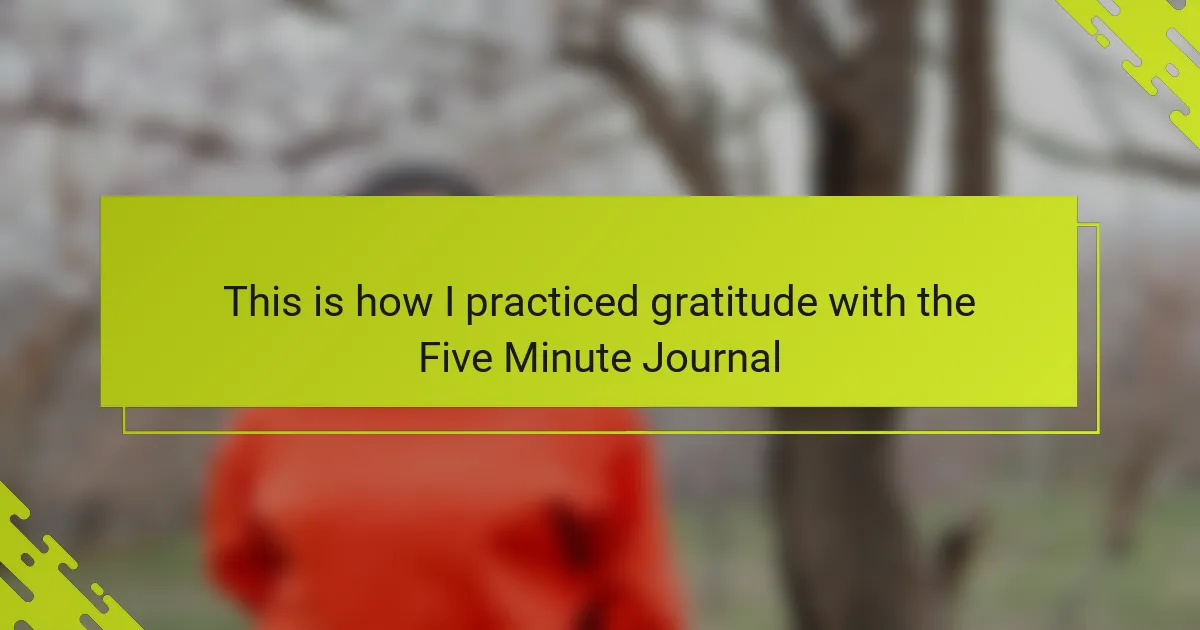Key takeaways
- Gratitude practice shifts mindset to recognize small, uplifting moments in daily life.
- The Five Minute Journal simplifies gratitude reflection with structured prompts, making it accessible for busy schedules.
- Expressing gratitude within queer culture fosters resilience, identity affirmation, and community connection.
- Consistency in journaling can be achieved by linking it to existing routines and allowing flexibility in entries.
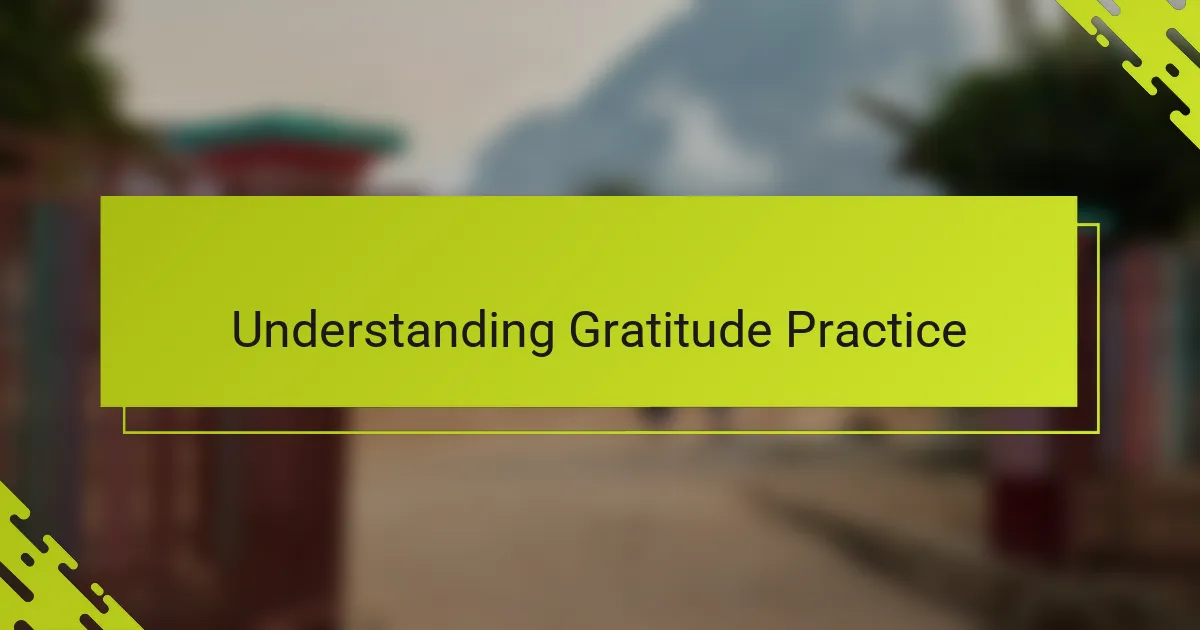
Understanding Gratitude Practice
Gratitude practice, to me, is more than just listing things I’m thankful for—it’s about shifting my mindset to notice the often-overlooked moments that quietly uplift my day. Have you ever stopped to really feel the warmth of a simple compliment or the calm of a brief pause? That’s the heart of gratitude—it teaches me to embrace these small, meaningful details instead of rushing past them.
Sometimes, I catch myself in negative thought loops, especially when life feels heavy or complicated. Practicing gratitude pulls me out of that spiral by anchoring me in the present, reminding me of what’s good right now. It’s almost like a gentle reset button for my emotions and outlook.
What struck me most about this practice is how it deepened my connection with myself and my community. Recognizing gratitude—even for tiny acts of kindness or moments of self-acceptance—feels like reclaiming joy, which is powerful, especially in queer spaces where celebration can sometimes feel scarce or complicated.
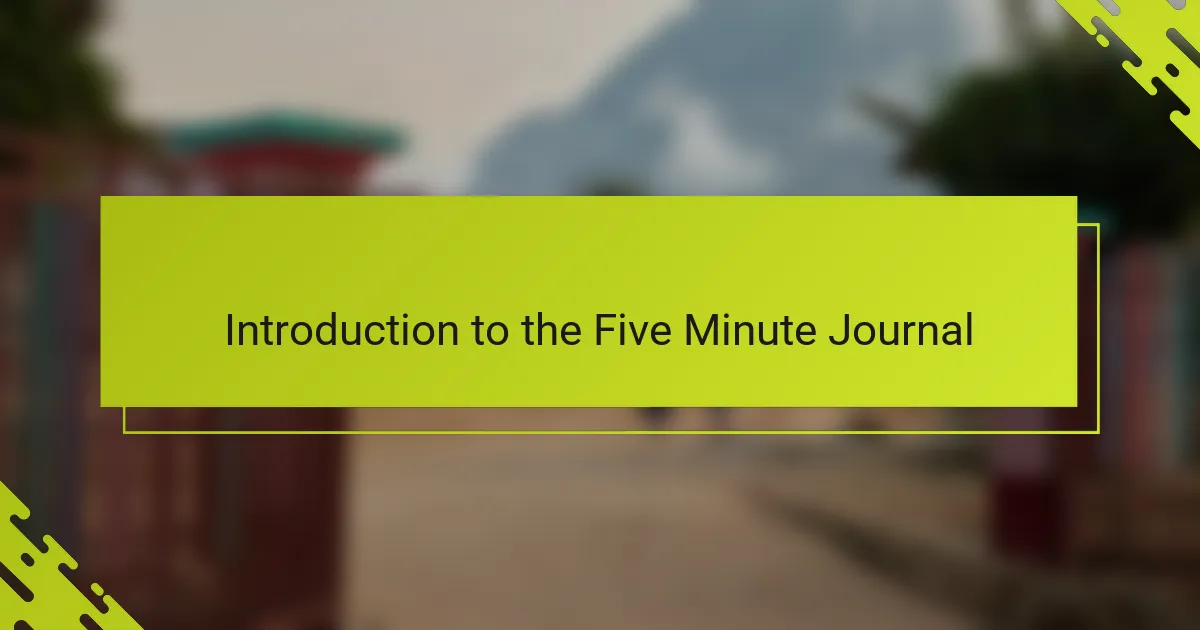
Introduction to the Five Minute Journal
The Five Minute Journal is designed to make gratitude practice simple and accessible. I was drawn to it because it doesn’t demand hours of reflection—just a few focused minutes each day. Have you ever wanted a tool that fits seamlessly into your busy life without feeling like a burden?
What I appreciate most is its structure: every morning, it prompts me to list things I’m grateful for and set intentions, while evenings invite me to reflect on positive moments and ways to improve. This routine felt like a gentle nudge to pay attention to the good that might otherwise go unnoticed.
Starting with such small, manageable steps made me wonder—could just five minutes shift how I view my day? From my experience, it absolutely did. It transformed gratitude from an abstract idea into a daily habit that grounded me, even on my hardest days.

Gratitude in Queer Women Culture
Gratitude in queer women culture often carries a unique resonance. For many of us, it’s not just about appreciating everyday blessings but also about honoring resilience and the fierce bonds that grow from shared experiences. Have you noticed how expressing gratitude in queer spaces can feel like both a radical act and a tender lifeline?
I remember moments in queer community gatherings where gratitude wasn’t just spoken—it was felt, deeply. Saying thanks for someone’s authentic self or their unwavering support wasn’t just polite; it was a meaningful way to affirm identity and create safety. That kind of gratitude becomes a thread that weaves us closer together, especially in worlds that don’t always recognize our worth.
Sometimes I wonder if cultivating gratitude within queer culture helps counterbalance the external challenges we face. From my perspective, it nurtures a powerful sense of belonging and self-love—a reminder that amidst complexity, there is always room to celebrate joy, connection, and growth. Have you experienced that too?

Setting Up Your Five Minute Journal
Setting up my Five Minute Journal was surprisingly straightforward, but it required a gentle commitment. I chose a quiet spot by my bed where the journal would be the first thing I saw each morning and the last thing I held at night. Have you ever noticed how the environment can shape your habit? For me, this simple change helped make gratitude a natural part of my routine.
I decided to keep my pen nearby, too—because capturing thoughts in the moment felt more authentic than forcing reflection later. Sometimes, while sipping my morning coffee, I’d pause to jot down what genuinely stood out to me, not what I thought I ‘should’ be grateful for. This small act made the practice feel personal, not performative.
One thing I realized quickly was the power of consistency over perfection. Some days, I wrote just one line; other days, more flowed freely. Did I miss entries? Sure. But returning to the journal the next day felt like reconnecting with a friend—always welcomed, never judged. That flexibility made setting up the journal feel like an invitation, not a chore.
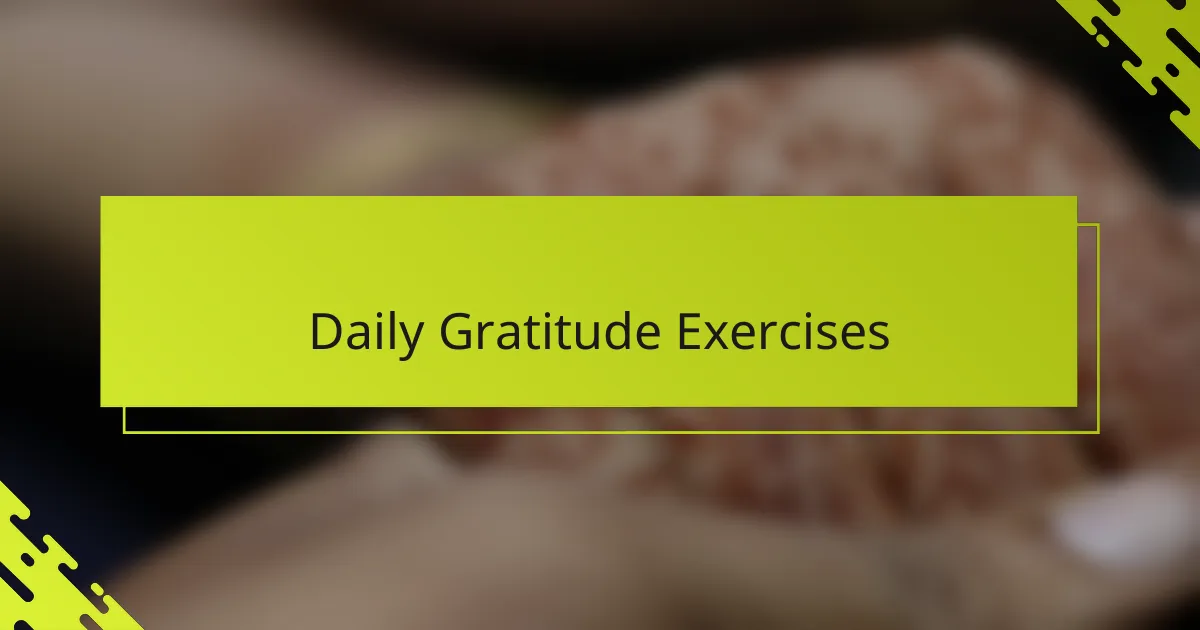
Daily Gratitude Exercises
Daily gratitude exercises became my little ritual—a moment carved out to really tune in, even when life felt chaotic. Have you ever tried writing down just three things you appreciate each morning? For me, this simple act shifted my mindset more than I expected, turning everyday moments into small celebrations.
One day, I noticed I was rushing through the list just to check a box. But pausing, even briefly, to savor each item—like the warmth of sunlight or a friend’s laughter—made the practice feel alive. It wasn’t about quantity but quality; that shift helped me feel more grounded and present.
Evenings brought a chance to reflect on the day’s silver linings. Asking myself, “What made me smile, or what could I’ve done differently?” became a gentle way to close the day with kindness rather than critique. Have you felt how this rhythm of gratitude exercises can soften the edges of a tough day? I certainly have.

Real-Life Examples and Benefits
I remember one evening when I was feeling overwhelmed with the weight of work and personal challenges. Writing just three things I was grateful for in the Five Minute Journal—like a supportive text from a close friend or the comfort of my favorite sweater—helped me shift from stress to a quieter, more peaceful mindset. Have you ever experienced how such small acknowledgments can ripple into genuine calm?
Another benefit I noticed was how documenting gratitude made my relationships richer. Noticing and appreciating the little ways queer community members showed up—whether through a shared smile or standing beside me during tough times—felt profoundly affirming. It made me realize that gratitude isn’t just personal; it strengthens the bonds that hold us together.
Over time, the Five Minute Journal became a tool that boosted my resilience. When days felt heavy or isolating, flipping back through past entries reminded me of persistent joys and kindnesses I might have otherwise forgotten. Do you think having that tangible record of gratitude can be a lifeline? From my experience, it absolutely can.
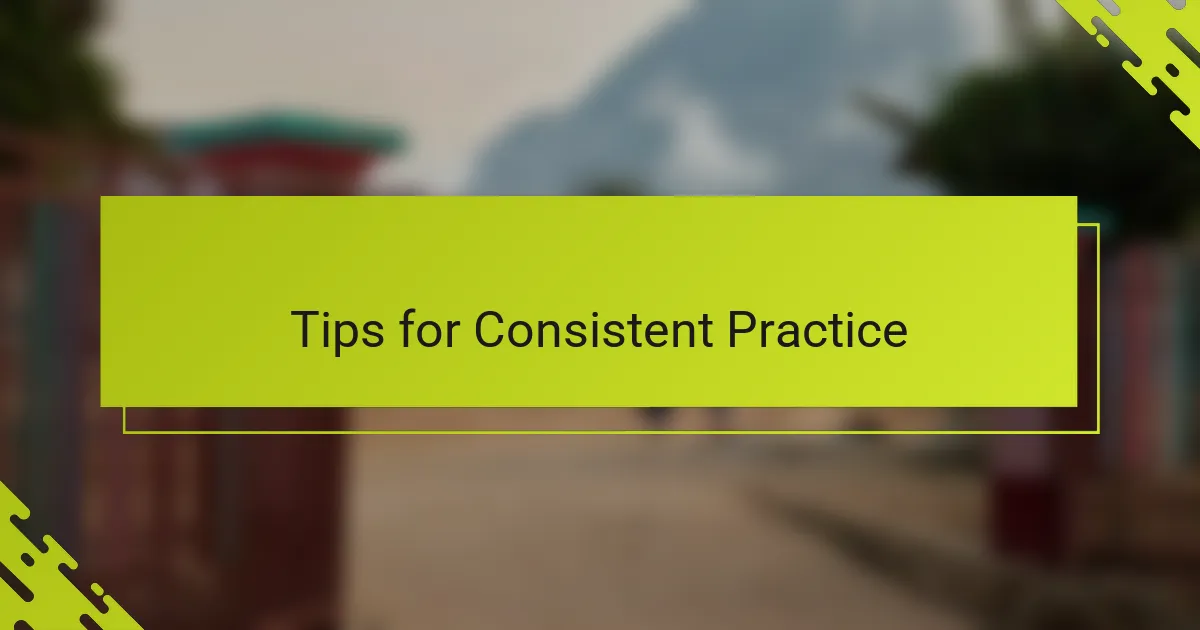
Tips for Consistent Practice
One habit that really helped me stay consistent was linking my journaling to something I already did daily, like my morning coffee ritual. Have you ever tried pairing a new habit with an existing routine? This small trick made the Five Minute Journal feel less like a task and more like a natural moment of reflection.
I also found that giving myself permission to be flexible was crucial. Some days, I’d write only one line, other times several, but I never stressed about the quantity. Does this idea of “progress over perfection” resonate with you? For me, it kept the practice sustainable and joyful rather than burdensome.
Finally, reminders—whether a phone alarm or a sticky note by my bed—played a subtle but powerful role. When life got hectic, those little nudges pulled me back to gratitude, reminding me that taking just five minutes for myself was worth it. What kind of reminder could fit into your day without feeling intrusive?
